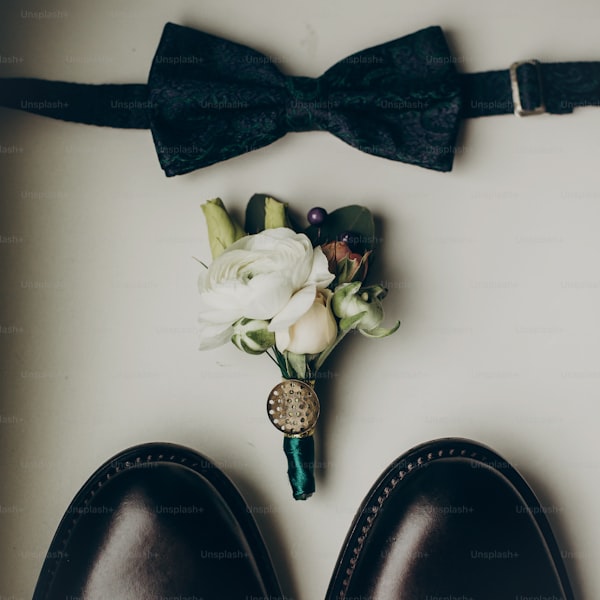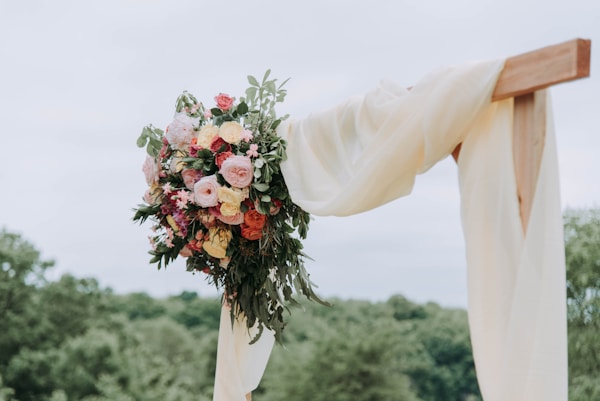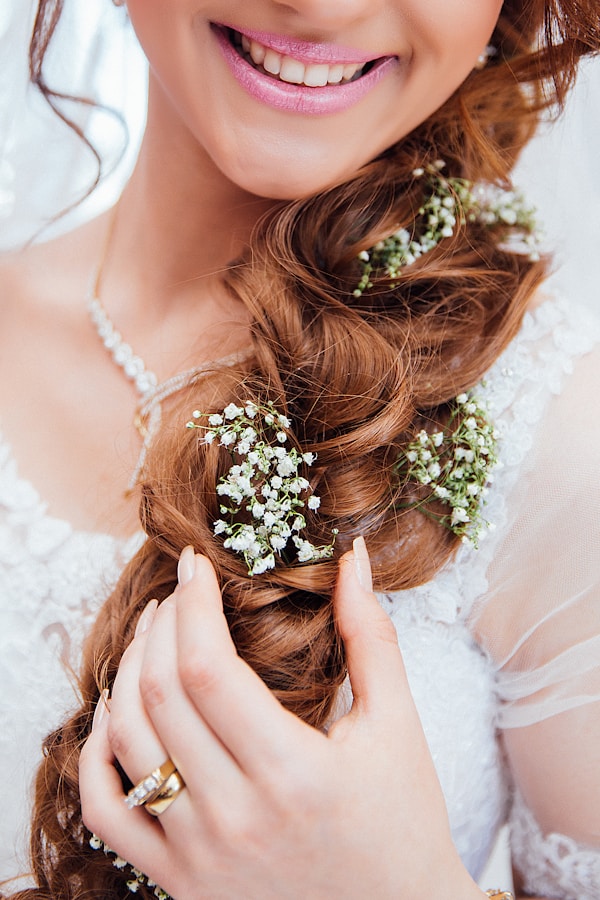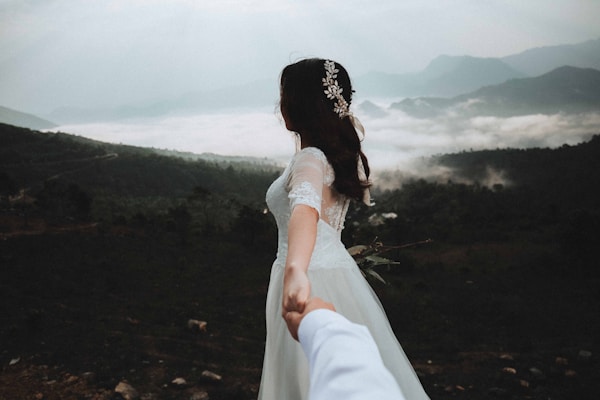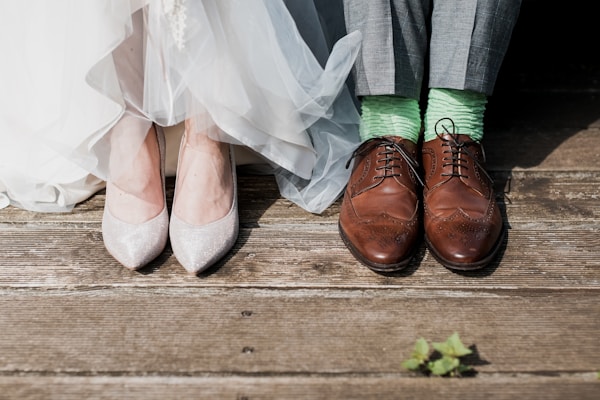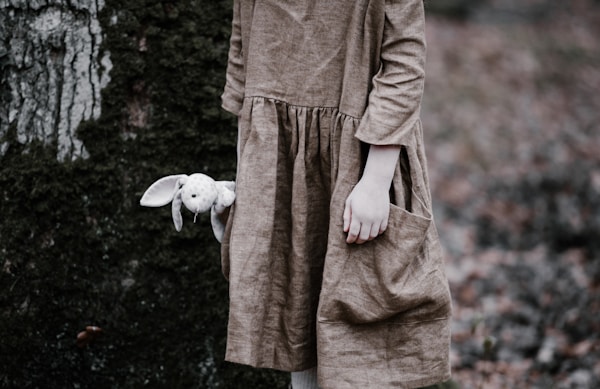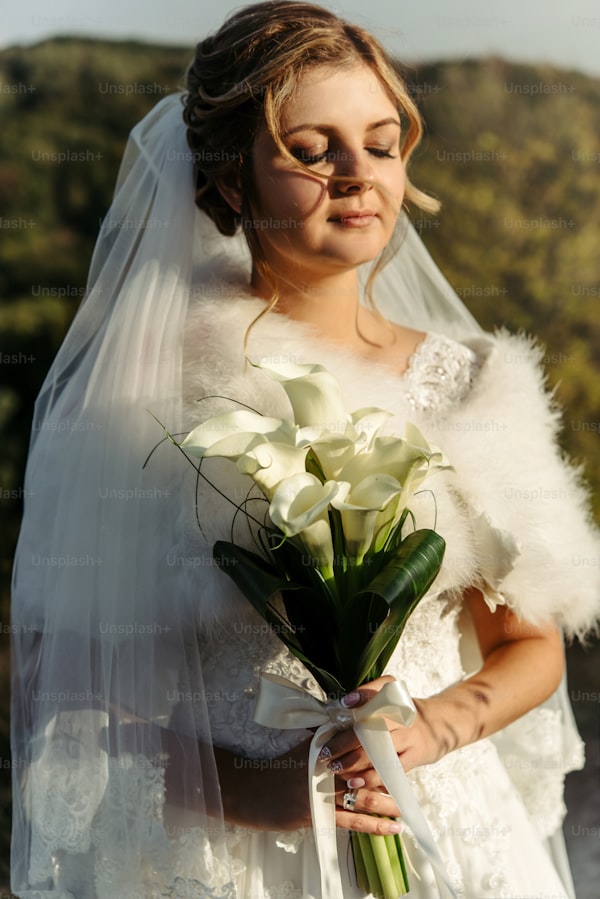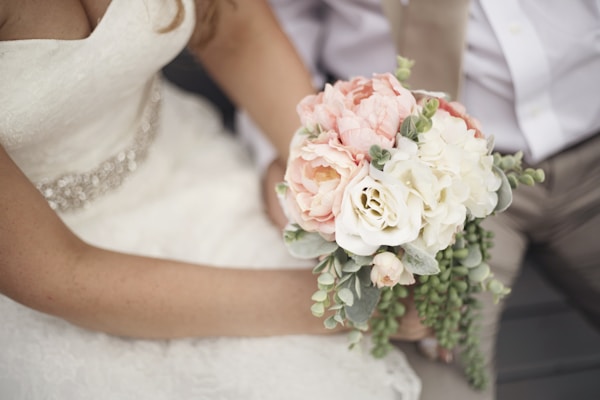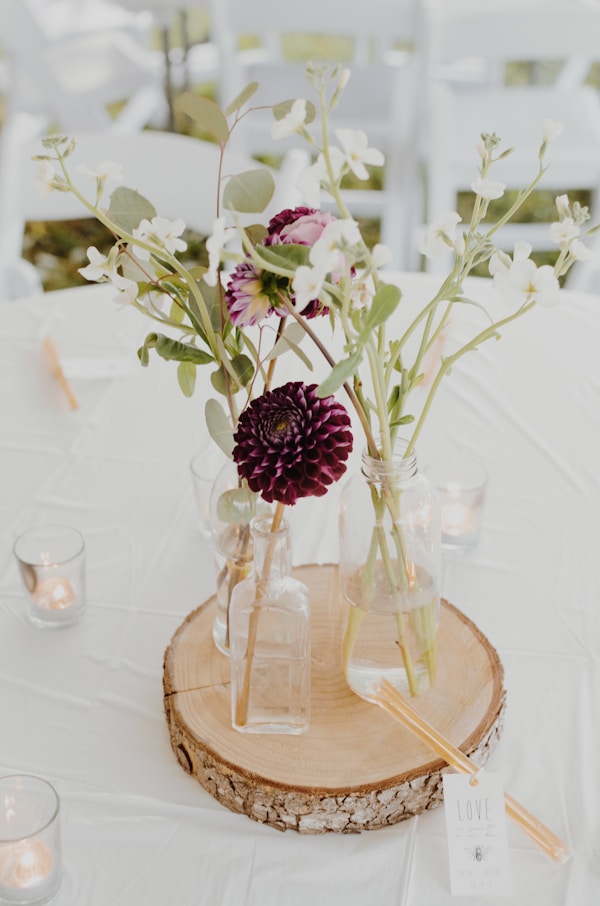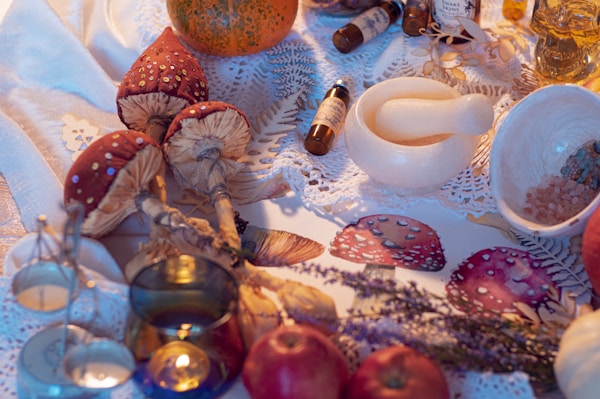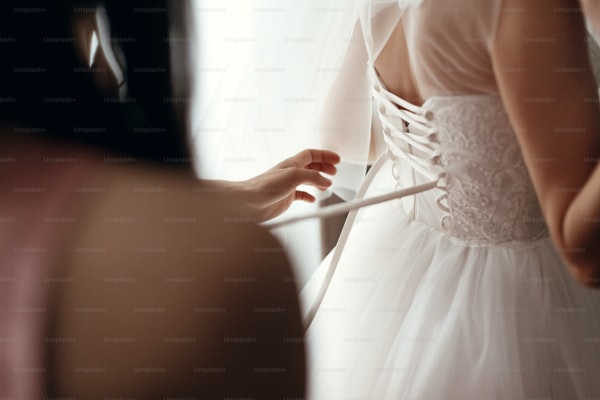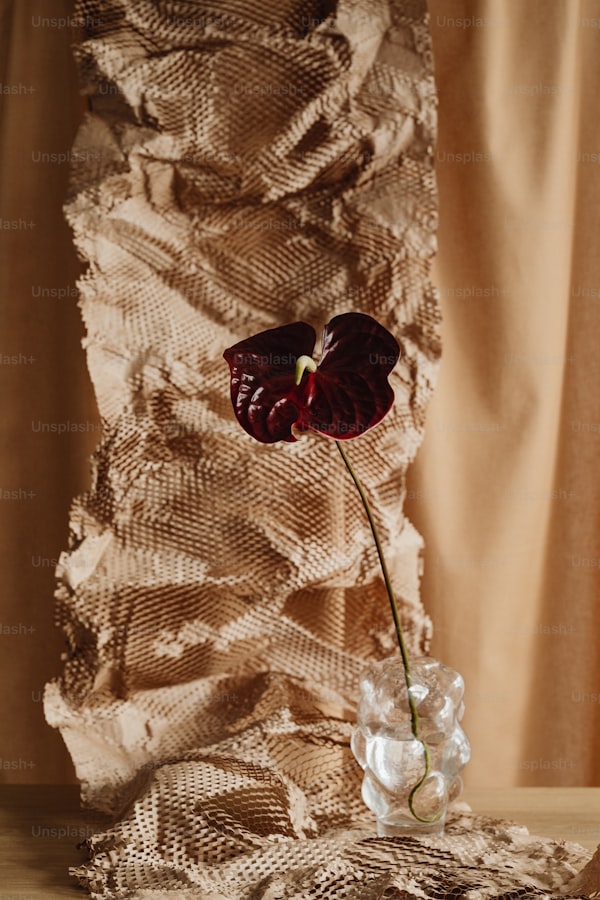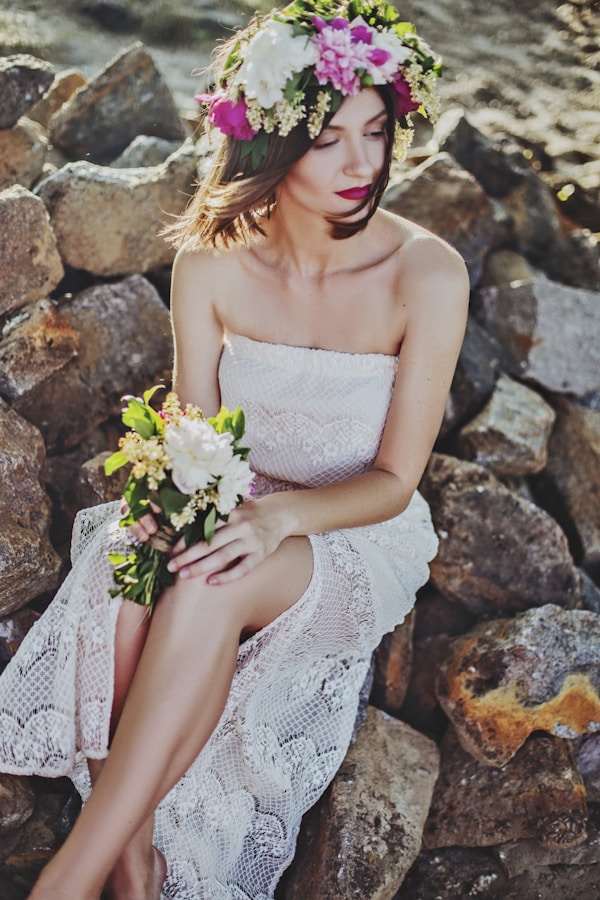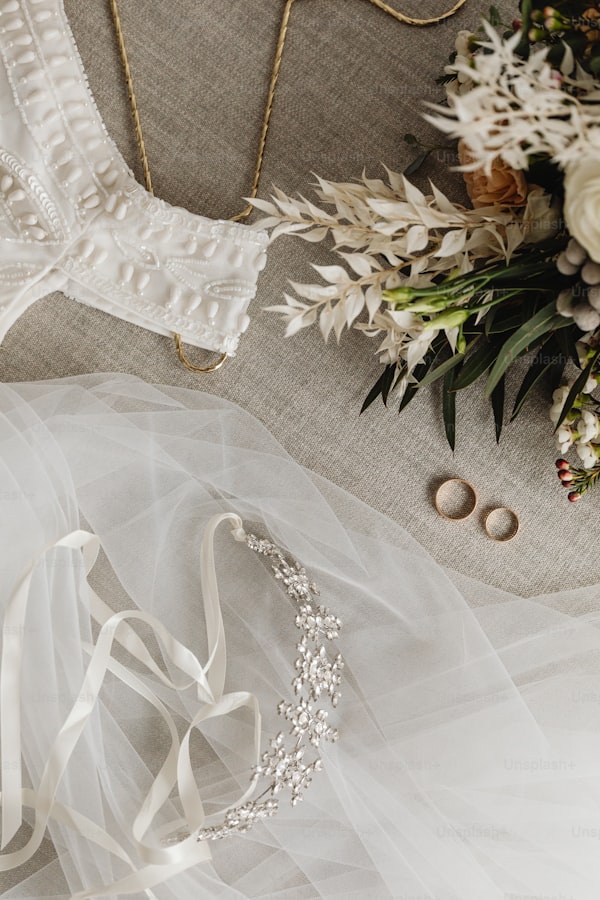Discover the Elegance of Bespoke Wedding Shoes: A Comprehensive Guide
Understanding Bespoke Wedding ShoesWhen it comes to ensuring that your wedding day is nothing short of perfect, every detail counts. One of the most significant pieces of your wedding ensemble is your footwear. Bespoke wedding shoes offer an unparalleled combination of style, comfort, and personal expression. In this article, we will delve into what bespoke wedding shoes are, why they are important, and how to choose the perfect pair for your big day.What Are Bespoke Wedding Shoes?Bespoke wedding shoes are custom-made footwear designed specifically for an individual. Unlike off-the-shelf shoes, bespoke options allow for a unique fit, style, and material selection tailored to the wearer's preferences. This level of personalization ensures that not only do the shoes look stunning, but they are also comfortable for a day filled with celebrations.Key Features of Bespoke Wedding ShoesCustomization: Choose the design, color, leather, and embellishments according to your preference.Perfect Fit: Crafted based on your foot measurements, ensuring supreme comfort.Quality Materials: Typically made with high-quality materials that offer durability and elegance.Artisan Craftsmanship: Handcrafted by skilled artisans, resulting in unique, high-quality shoes.Why Invest in Bespoke Wedding Shoes?Weddings are memorable occasions, and every bride and groom desires to make an unforgettable statement. Here are several compelling reasons to opt for bespoke wedding shoes:Uniqueness: Your wedding shoe...
Your Guide to Unique Wedding Day Fashion: Stand Out on Your Big Day
Discover the Essence of Unique Wedding Day FashionYour wedding day is one of the most memorable occasions in your life, and your attire plays a pivotal role in making it unforgettable. With so many couples wanting to stand out, unique wedding day fashion has become a trending topic. In this article, we will explore various styles, tips, and ideas to help you showcase your individuality as you walk down the aisle.What is Unique Wedding Day Fashion?Unique wedding day fashion refers to wedding attire and accessories that diverge from traditional norms. This can include unconventional dress designs, non-traditional suits, and personalized accessories that reflect the couple’s personality and style. Couples are now seeking creative ways to showcase their uniqueness, pushing the boundaries of typical wedding fashion.Why Choose Unique Wedding Day Fashion?There are several reasons why couples might opt for unique wedding day fashion:Personal Expression: A wedding is a celebration of love and commitment, and your attire should reflect who you are as a couple.Breaking Traditions: Choosing unique attire allows you to break away from conventions and make your special day your own.Inspiration for Others: By showcasing your individual style, you may inspire other couples to embrace their uniqueness in their celebrations.Current Trends in Unique Wedding Day FashionThe world of wedding fashion is ever-evolving. Here are some current trends that highlight unique wedding day fashion:TrendDescr...
Exploring Luxury Bridal Boutiques: A Guide to Finding Your Dream Wedding Dress
Introduction to Luxury Bridal BoutiquesWeddings are among the most special occasions in our lives, and for many brides, finding the perfect wedding dress is a pivotal part of the journey. Luxury bridal boutiques offer an unmatched experience in terms of selection, service, and exclusivity. In this article, we will explore what sets luxury bridal boutiques apart, the essential features that these boutiques offer, and how to make the most of your shopping experience. We’ll also address frequently asked questions and provide key considerations for brides-to-be.What Are Luxury Bridal Boutiques?Luxury bridal boutiques are specialized stores that cater to brides seeking high-end wedding dresses and accessories. These boutiques typically stock designer gowns, unique fabrics, and bespoke options that aren't available in standard bridal shops. The experience at a luxury boutique often includes personalized service, private appointments, and an elegant atmosphere, making the shopping experience as memorable as the wedding itself.Features of Luxury Bridal BoutiquesFeatureDescriptionExclusive DesignersMany luxury boutiques carry exclusive lines from renowned designers, offering styles that are not widely available.Personalized ServiceBrides often receive one-on-one consultations with experienced stylists who understand body types and wedding themes.Custom OptionsMany boutiques offer the possibility of customizing gowns to ensure that every detail is perfect.High-Quality FabricsLuxury bou...
Unveiling the Allure of High-Fashion Bridal Designs: A Comprehensive Guide
In the world of weddings, bridal fashion plays a pivotal role in setting the tone for the entire celebration. Among the myriad of options available, high-fashion bridal designs stand out as a symbol of elegance and sophistication. This article delves deep into the captivating realm of high-fashion bridal designs, exploring their history, current trends, and what brides-to-be should consider when choosing their dream gown.Understanding High-Fashion Bridal DesignsHigh-fashion bridal designs refer to the couture creations crafted by renowned fashion houses and designers that are characterized by exquisite craftsmanship, lavish fabrics, and unique silhouettes. Designers such as Vera Wang, Marchesa, and Monique Lhuillier are synonymous with bridal couture, often setting trends that influence the overall wedding industry. These designs are not just dresses; they are works of art that tell a story of dreams, love, and celebration.Historical Context of Bridal FashionTo appreciate high-fashion bridal designs, one must understand their evolution. Traditionally, weddings were marked by simplicity and modesty, with brides often wearing dresses that were practical and understated. However, the 20th century witnessed a dramatic shift with the emergence of high fashion, propelled by influential figures such as Queen Victoria. Her choice of a white gown in 1840 initiated a revolution that changed bridal fashion forever.DecadeBridal Fashion Highlights1920sFlapper dresses with beading and intr...
Exploring Romantic Bridal Gown Styles: A Guide to Finding Your Dream Dress
Introduction to Romantic Bridal Gown StylesWhen it comes to planning a wedding, one of the most exciting yet daunting tasks is choosing the perfect bridal gown. For many brides, romantic bridal gown styles capture the essence of their dream wedding. These styles not only emphasize beauty and elegance but also embody the love and passion that surrounds this special day. In this article, we will explore various romantic bridal gown styles, trends, and tips to help you find the gown that speaks to your heart.What Defines a Romantic Bridal Gown?Romantic bridal gowns are characterized by their soft silhouettes, delicate fabrics, and ethereal details. Typically featuring lace, tulle, and satin, these gowns often include intricate designs such as ruffles, embroidery, and beading. The overall effect is enchanting and fairy tale-like, making it ideal for brides who want to evoke a sense of romance on their wedding day.Popular Romantic Bridal Gown StylesThere are several romantic bridal gown styles that have captivated brides over the years. Here are some of the most popular choices:StyleDescriptionPopular FabricsA-Line GownThis classic silhouette is fitted at the bodice and flows out to the ground, resembling the shape of a capital letter "A."Lace, chiffon, satinBall GownA true princess style, the ball gown features a fitted bodice and a voluminous skirt.Tulle, organza, satinMermaid GownFitted at the bodice and flaring out at the knee, this silhouette highlights curves and creates a d...
Exploring the Latest Bridal Accessory Trends: Glam Up Your Wedding Day
As brides prepare for their big day, one of the most exciting aspects is selecting the perfect bridal accessories. Bridal accessory trends evolve every year, bringing fresh ideas that can elevate wedding attire and create unforgettable looks. Understanding the current trends ensures that brides remain stylish while maintaining a personal touch. In this article, we will delve into the latest bridal accessory trends for 2023, explore various types of accessories, and provide tips on how to choose the right pieces for your unique wedding style.Understanding Bridal AccessoriesBridal accessories encapsulate a wide range of items that enhance a bride's appearance on her wedding day. From intricate veils to statement jewelry, these pieces play a significant role in shaping the overall bridal look. To guide brides through the myriad of choices available, we will categorize the trends into specific types of accessories:Type of AccessoryTrendsVeilsOversized designs, embroidered detailsJewelryVintage-inspired, personalized piecesHair AccessoriesFloral crowns, jeweled headbandsFootwearColored shoes, decorated sneakersBelts and SashesMetallic accents, floral embellishmentsTop Bridal Accessory Trends for 20231. Bold VeilsThe veil is no longer just a traditional piece; it has transformed into a major statement accessory. In 2023, oversized veils with intricate embroidery are making waves. Many designers are embracing unique materials, creating dramatic silhouettes that trail behind the brid...
Exploring Modern Bridal Dress Designs: Trends, Styles, and Inspiration
Introduction to Modern Bridal Dress DesignsIn the world of weddings, the bridal dress holds a place of ultimate importance. As brides seek to express their individuality and personal style, the realm of modern bridal dress designs has seen an explosion of creativity and innovation. This article explores the latest trends, styles, and inspirations in the realm of bridal fashion, ensuring that every bride finds the perfect dress for her special day. Whether you are seeking advice on styles, trends, or how to choose the perfect dress, you're in the right place.Current Trends in Modern Bridal Dress DesignsThe fashion landscape for weddings is constantly evolving. Some trends that have gained traction in recent years include: Sustainable Materials: Eco-conscious brides are opting for dresses made from sustainable fabrics. Bold Colors: Traditional white dresses are being replaced with vibrant hues such as blush, light blue, and even black. Minimalist Aesthetics: Simple, clean lines and understated designs are becoming increasingly popular. Mix-and-Match Pieces: Brides are experimenting with separates, allowing them to create unique looks.Popular Styles of Modern Bridal DressesIt is crucial for brides to understand the different styles available when searching for their perfect gown. Here are some styles that are trending: Style Description A-Line Features a fitted bodice and flares from the waist, flattering for most body types. ...
Couture Wedding Accessory Trends: Elevate Your Bridal Look in 2023
Weddings are a special occasion, symbolizing love, commitment, and the beginning of a beautiful journey. In 2023, couture wedding accessory trends are making headlines, allowing brides to express their unique styles and make a lasting impression. From intricate headpieces to exquisite veils, every element matters in crafting the perfect bridal ensemble. In this article, we will delve into the latest trends in couture wedding accessories, providing insights and tips that can help you create a stunning bridal look. Understanding Couture Wedding Accessories Couture wedding accessories are custom-made pieces designed to enhance a bride's overall look. These accessories are often unique, incorporating high-quality materials and intricate craftsmanship. They can range from timeless classics to modern statement pieces, making them essential for any bride aiming for a personalized wedding experience. Let’s explore the top trends in couture wedding accessories for 2023. 1. Statement Headpieces This year, statement headpieces are at the forefront of bridal fashion. Gone are the days of simple combs and veils. Brides now seek bold designs that reflect their personality. Some popular options include: Floral Crowns: These are perfect for bohemian-themed weddings, adding a touch of natural beauty. Ornate Hairpins: Delicate hairpins adorned with crystals and pearls can transform a simple hairstyle into something spectacular. Veil Embellishments: Brides are opting for veils with i...
Elevate Your Wedding Look: The Ultimate Guide to Lace Bridal Accessories
IntroductionYour wedding day is one of the most important occasions in your life, and every detail matters, especially when it comes to your bridal accessories. Amongst the myriad of choices available to modern brides, lace bridal accessories have made a significant mark, offering a touch of elegance and romance. This article explores everything you need to know about lace bridal accessories, how they can complement your wedding attire, and where to find the best options.Why Choose Lace Bridal Accessories?Lace has been a beloved fabric in the bridal world for centuries. Its intricate patterns and lightweight nature make it perfect for various bridal accessories. Here are some reasons why you should consider lace bridal accessories for your big day:Timelessness: Lace is classic and never goes out of style.Versatility: Lace can be incorporated into various accessories including veils, headpieces, and garters.Personalization: Lace can be tailored to match your gown, colors, and personal style.Romantic Appeal: Lace adds an ethereal, romantic touch that complements the overall bridal look.A Variety of Lace Bridal AccessoriesYour wedding attire isn't complete without the right accessories. Here, we highlight some popular lace bridal accessories that you can consider:AccessoryDescriptionStyling TipsLace VeilsAdds a layer of elegance while creating a classic bridal look.Pair with strapless or off-shoulder gowns for maximum impact.Lace HeadpiecesIncludes adornments such as combs or ti...
Elevate Your Wedding Look: The Ultimate Guide to Lace Bridal Belts
When it comes to achieving the perfect bridal ensemble, every detail counts. One accessory that has gained immense popularity among brides is the lace bridal belt. This elegant addition not only enhances the waistline but also adds a touch of class and individuality to a wedding gown. In this comprehensive guide, we will explore everything you need to know about lace bridal belts, including styles, how to choose the right one, and tips for pairing them with your dress.What Are Lace Bridal Belts?A lace bridal belt is an accessory designed to accentuate the waist of a wedding dress. Made from exquisite lace fabrics, these belts can come adorned with embellishments such as beads, crystals, or flowers, adding a refined look to any bridal gown. They can be worn over strapless, A-line, or even ball gown dresses, making them a versatile choice for any bride.Why Choose a Lace Bridal Belt?Adding a lace bridal belt to your wedding attire can offer numerous benefits: Enhances Silhouette: A lace belt emphasizes the bride's waist, creating a flattering silhouette that can transform the overall appearance of the dress. Personal Touch: With various styles and embellishments available, lace belts give brides an opportunity to express their personal style. Versatile Availability: These belts can be found in a range of colors and designs, ensuring there's a perfect match for every wedding theme.Different Styles of Lace Bridal BeltsLace bridal belts come in various styles, each offering a di...
The Ultimate Guide to Lace Wedding Dress Preservation: Keeping Your Memories Intact
Understanding Lace Wedding Dress PreservationYour wedding day is one of the most significant events in your life, and your lace wedding dress is a pivotal part of that moment. Preserving it properly ensures that it remains a cherished memory for years to come. In this guide, we will explore the art of lace wedding dress preservation, outlining the best methods, tips, and considerations for keeping your dress in pristine condition.Why is Lace Wedding Dress Preservation Important?Wedding dresses, especially those made of delicate materials like lace, are prone to damage, discoloration, and degradation over time. Here are a few reasons why preservation is crucial: Sentimental Value: Your dress is not just clothing; it's a symbol of your love story. Preserving it means keeping that memory alive. Investment Protection: Lace wedding dresses can be expensive. Preserving it protects your investment and ensures its value remains intact. Future Generations: A preserved wedding dress can be passed down to daughters or family members, keeping traditions alive.Steps for Successful Lace Wedding Dress PreservationPreserving a lace wedding dress involves a series of crucial steps. Below is a comprehensive guide to ensure you preserve your dress successfully:1. Clean the Dress ImmediatelyAfter your wedding day, it's essential to have your dress cleaned promptly. Stains from food, makeup, or perspiration can set in and become nearly impossible to remove later. Use a professional clean...
Discover the Elegance of Bridal Lace Accessories: Enhance Your Wedding Look
Introduction to Bridal Lace AccessoriesIn the world of weddings, every detail matters, and one of the most exquisite elements to enhance a bridal look is bridal lace accessories. These delicate pieces not only add a touch of elegance but also symbolize romance and tradition. In this article, we will explore various types of bridal lace accessories, their history, styling tips, and how to choose the perfect ones for your special day.The Significance of Lace in Bridal WearLace has been a popular choice in bridal attire for centuries. Its intricate patterns and lightweight texture create a dreamy aesthetic, making it a favorite among brides globally. Historically, lace was associated with luxury and craftsmanship, often used in royal weddings. Today, it remains a timeless element that can complete any bridal outfit.Types of Bridal Lace AccessoriesAccessory TypeDescriptionLace VeilsAdds a romantic and ethereal touch to the bridal gown. Available in various lengths and designs.Lace GlovesPerfect for vintage-inspired weddings; they provide elegance and sophistication.Lace ShawlsGreat for chilly weddings; these can be layered over the dress for added warmth and style.Lace HairpiecesCan include headbands or clips adorned with lace, adding charm and grace to your hairstyle.Lace SashesWorn around the waist, these enhance the silhouette of the gown while incorporating lace details.Styling Suggestions for Bridal Lace AccessoriesWhen considering how to integrate lace accessories into your...
Elevate Your Wedding Look with Vintage Lace Bridal Belts
Introduction to Vintage Lace Bridal BeltsYour wedding day is one of the most important days of your life, and every detail matters. Among those details, your wedding dress stands out as the centerpiece of your bridal look. While selecting the perfect gown is crucial, don’t overlook the accessories that can truly elevate your outfit. One such accessory that has captured the hearts of brides around the world is the vintage lace bridal belt. These exquisite pieces of craftsmanship not only add a touch of elegance and style to your attire but also serve to enhance your waistline beautifully.What Are Vintage Lace Bridal Belts?Vintage lace bridal belts are traditionally made from delicate lace materials and feature intricate designs, often adorned with beads, sequins, or floral patterns. Such belts can be attached directly to your wedding dress or worn over it, depending on your preferred style. These belts come in various widths and lengths, providing the flexibility to match different silhouettes and dress designs. The vintage aspect of these belts often refers to their design inspiration, which can derive from the elegant fashions of the early to mid-20th century.Why Choose a Vintage Lace Bridal Belt?There are several reasons to opt for a vintage lace bridal belt: Enhanced Silhouette: A well-placed belt accentuates your waist, creating a flattering hourglass figure. Unique Aesthetic: Vintage lace bridal belts bring a unique charm to your bridal look, often reflecting personal ...
The Ultimate Guide to Lace Bridal Sash Belts: Enhance Your Wedding Look
Why Choose Lace Bridal Sash Belts?Every bride dreams of looking stunning on her wedding day, and every detail counts. One often-overlooked accessory is the lace bridal sash belt. These belts not only elevate the overall look of a wedding gown but also add a touch of elegance that is both timeless and modern. In this guide, we will explore the reasons to choose lace bridal sash belts, how to wear them, and the various styles available.The Versatility of Lace Bridal Sash BeltsLace bridal sash belts are incredibly versatile and can complement a variety of wedding gown styles. Whether you are wearing a classic ball gown or a modern sheath dress, a lace sash can enhance your silhouette. The soft, delicate texture of lace adds a romantic touch to your ensemble.Many brides opt for lace bridal sash belts to provide a cinched waist effect, creating an hourglass figure that flatteringly highlights their natural shape. Additionally, these belts can be styled in numerous ways, such as tied in a bow or left hanging for a more relaxed look.Popular Styles of Lace Bridal Sash BeltsStyleDescriptionBest ForClassic LaceTraditionally designed belts that feature intricate lace patterns.Classic wedding gowns.Embellished LaceLace belts adorned with pearls, beads, or rhinestones for added glamour.Glamorous or vintage-inspired gowns.Boho-Chic LaceLoose, flowing lace sashes that capture a free-spirited essence.Bohemian-style dresses.Colorful LaceLace belts that come in various colors to match the wedd...
Lace Wedding Dress Cleaning Tips: Preserve Your Dream Dress for a Lifetime
The Importance of Proper Lace Wedding Dress CareWhen it comes to weddings, every detail matters, especially the wedding dress. A lace wedding dress is often a centerpiece of the bride's attire, symbolizing beauty and elegance. However, after the joyous occasion, it's crucial to know the best cleaning practices to preserve its delicate fabric. This article will provide you with comprehensive lace wedding dress cleaning tips to ensure your cherished garment remains in pristine condition for years to come.Understanding Lace Wedding Dress FabricsLace is a beautiful yet delicate fabric that requires special attention when it comes to cleaning. It is typically made from threads of cotton, silk, or synthetic fibers, and often embellished with beading or embroidery. Knowing the type of lace fabric used in your dress can help determine the best cleaning methods. Here are some common lace types:Lace TypeCharacteristicsCleaning MethodChantilly LaceSoft, lightweight, and intricate in designHand wash or dry cleanAlençon LaceHeavy, embroidered lace usually featuring floral patternsDry clean recommendedVenise LaceHeavier lace with a raised design, often used as an appliqueHand wash or delicate cycleGeneral Tips for Cleaning Your Lace Wedding Dress1. Always Check the Care LabelThe first step in cleaning your lace wedding dress is to always check the care label attached to it. The manufacturer usually provides specific instructions for cleaning, which should take precedence over general tips....
Lace Ribbon Bridal Belts: The Perfect Accessory for Your Dream Wedding
Introduction to Lace Ribbon Bridal BeltsWhen it comes to weddings, every bride wants to look her absolute best. Among the various accessories that can enhance a bridal gown, lace ribbon bridal belts have become increasingly popular. These chic and elegant belts not only accentuate the waist but also bring an added layer of refinement to a wedding ensemble. In this article, we’ll explore everything you need to know about lace ribbon bridal belts, from styles and fabric choices to tips for selecting the right one for your special day.Why Choose Lace Ribbon Bridal Belts?Lace ribbon bridal belts serve multiple purposes that go beyond simply adding visual interest to your gown. Here are some key reasons to consider: Enhancing Silhouette: A well-placed bridal belt can beautifully highlight your waist, creating an hourglass figure that is timeless and flattering. Adding Texture: Lace adds a layer of texture that can complement your gown's details. The contrast between the lace and smooth fabric can be stunning. Versatile Design: Lace ribbon belts come in various styles, making them suitable for different wedding themes, from vintage to modern.Types of Lace Ribbon Bridal BeltsChoosing the right lace ribbon bridal belt depends on your wedding dress style and personal taste. Let’s look at some popular types: Type Description Classic Lace Features traditional lace patterns, perfect for vintage-style weddings. Floral Embelli...
Lace Trim Wedding Dress Belts: The Perfect Accessory for Your Big Day
Enhance Your Wedding Dress with Lace Trim BeltsWhen it comes to finding the perfect wedding dress, every detail matters. One accessory that can elevate your bridal look is a lace trim wedding dress belt. These belts not only add a touch of elegance and romance to your gown but also serve a functional purpose by accentuating your waistline. In this article, we will delve into the world of lace trim wedding dress belts, exploring their styles, benefits, and how to choose the right one for your special day.What Are Lace Trim Wedding Dress Belts?Lace trim wedding dress belts are decorative bands adorned with exquisite lace details that are worn over the waist of a wedding gown. They come in various styles, colors, and designs, allowing brides to customize their look. The delicate lace creates an ethereal appearance, making it a popular choice among brides who want to achieve a romantic aesthetic.Styles of Lace Trim Wedding Dress BeltsThere are numerous styles of lace trim wedding dress belts available in today's market. Here are a few popular options:StyleDescriptionClassic Lace BeltA simple belt featuring intricate lace patterns that exude timeless elegance.Embellished Lace BeltLace belts adorned with pearls, crystals, or sequins for added sparkle and glamour.Bohemian Lace BeltA wide, flowing belt made from soft lace, perfect for a relaxed, boho-chic wedding theme.Detachable Lace BeltA versatile option that allows you to easily remove or swap out the belt, giving flexibility to ...
Lace and Pearl Bridal Accessories: The Key to an Elegant Wedding Look
When it comes to weddings, every bride wants to look her absolute best, and lace and pearl bridal accessories can make that dream a reality. These timeless elements not only enhance the overall bridal look but also add a touch of sophistication and charm. This article delves into the world of bridal accessories made with lace and pearls, exploring their significance, styles, and how to incorporate them into your wedding ensemble.Understanding Lace and Pearls in Bridal FashionLace and pearls have been synonymous with elegance in bridal fashion for centuries. The intricate designs of lace can evoke a sense of romance, while pearls symbolize purity and innocence. Together, they create a stunning combination that enhances the beauty of any bride.The Charm of Lace in Bridal AccessoriesLace is a versatile and delicate fabric that adds texture and dimension to bridal accessories. From veils to hairpieces, its aesthetic appeal complements various wedding themes—from vintage to modern. Brides can choose from a variety of lace patterns, such as floral designs, geometric shapes, or intricate embroidery, each adding a unique touch to their wedding day look.Why Choose Pearl Accessories?Pearls are a classic choice for bridal accessories, renowned for their luster and elegance. They can be easily paired with lace to create stunning combinations. Pearl accessories, such as necklaces, earrings, and bracelets, can enhance a bride's natural beauty and make her feel timeless and graceful. Whethe...
Elevate Your Wedding with Colored Lace Bridal Sashes
Transform Your Wedding Look with Colored Lace Bridal SashesWhen it comes to planning the perfect wedding, every detail counts, down to the accessories that adorn your beautiful bridal gown. One accessory that has gained popularity among brides in recent years is the colored lace bridal sashes. Not only do these sashes add a touch of elegance and charm to your wedding ensemble, but they also serve as a means to incorporate your wedding colors or personal style into your look.Understanding Colored Lace Bridal SashesColored lace bridal sashes are beautifully crafted strips of fabric made from delicate lace, available in a variety of colors. They can be tied around the waist of the bridal gown or used to accentuate the design of the dress. The versatility of these sashes makes them perfect for various wedding themes, whether you are going for a rustic outdoor ceremony or a classic ballroom wedding.Why Choose Colored Lace Bridal Sashes?The choice of a colored lace bridal sash can be the perfect way to add a unique touch to your wedding dress. Here are several reasons why they are a great option: Personalization: A colored lace sash allows you to infuse your personality and style into your wedding attire. Whether you choose a vibrant hue or a soft pastel, it’s an expression of who you are as a couple. Highlighting Features: These sashes not only add color but can also be strategically used to create an hourglass silhouette, accentuating your waist and enhancing the overall si...
The Ultimate Guide to Lace-Adorned Wedding Belts: Adding Elegance to Your Bridal Look
Introduction to Lace-Adorned Wedding BeltsWedding belts have become a staple in bridal fashion, offering a unique touch to the wedding gown that enhances the overall aesthetic. Among these stunning accessories, lace-adorned wedding belts stand out as an exquisite choice for brides looking to add elegance and charm to their attire. In this guide, we will explore the allure of lace-adorned wedding belts, their history, styles, and how to choose the perfect one for your special day.The History of Lace in Wedding FashionLace has a rich history in fashion, particularly in wedding attire. Dating back to the 16th century, lace was first introduced to the bridal world in Europe, symbolizing purity and sophistication. As wedding customs evolved, lace began to adorn various elements of bridal attire, including veils, gowns, and belts. Lace-adorned wedding belts emerged as a modern interpretation of this classic trend, allowing brides to personalize their look while honoring traditional aesthetics.Why Choose a Lace-Adorned Wedding Belt?Brides often seek ways to enhance their bridal gown with accessories that reflect their personal style. Here are some compelling reasons to choose a lace-adorned wedding belt: Elegance: Lace adds a timeless elegance to any outfit, seamlessly blending with various gown styles. Customization: A lace belt can be designed to match or contrast with your wedding gown, allowing for a unique look. Highlighting Your Waist: A wedding belt can accentuate your wai...
